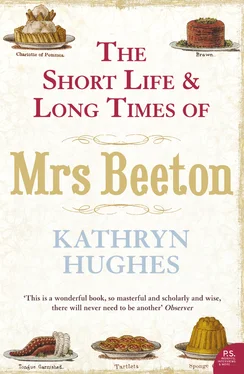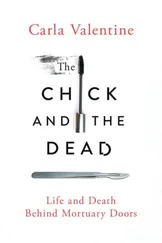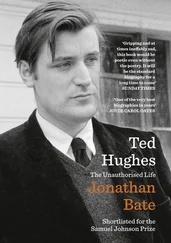The bickering rumbled on through the 1860s and 1870s, pulling in other players along the way. There were constant disputes, some of which actually came to court, over who had right of way, who was due ground rent, who was entitled to erect a temporary stand. Timothy Barnard, a local market gardener, had the right to put up a wood and canvas structure to the right of the Grandstand, which naturally narked the Association. Local grandees who disapproved of betting (and there were some) refused to allow their land to be used for the wages of sin. The overall impression that comes through the records of Epsom racecourse is that of a bad-tempered turf war, a contest between ancient vested rights and newer commercial interests. Everyone, it seemed, wanted a slice of the pie on the Downs.
By the time Charles Dickens visited Epsom in 1851 to describe Derby Day to the readers of his magazine Household Words , Henry Dorling was sufficiently secure in his small, if squabbling, kingdom to be a legitimate target of Dickens’ pricking prose:
A railway takes us, in less than an hour, from London Bridge to the capital of the racing world, close to the abode of the Great Man who is – need we add! – the Clerk of Epsom Course. It is, necessarily, one of the best houses in the place, being – honour to literature – a flourishing bookseller’s shop. We are presented to the official. He kindly conducts to the Downs … We are preparing to ascend [the Grand Stand] when we hear the familiar sound of the printing machine. Are we deceived? O, no! The Grand Stand is like the Kingdom of China – self-supporting, self-sustaining. It scorns foreign aid; even to the printing of the Racing Lists. This is the source of the innumerable cards with which hawkers persecute the sporting world on its way to the Derby, from the Elephant and Castle to the Grand Stand. ‘Dorling’s list, Dorling’s correct list!’ with the names of the horses, and colours of the riders!
But there were limits even to Dorling’s ascendancy. No amount of cosy cooperation with Lord George Bentinck–Bentinck lent him £5,000 and Dorling responded by giving his third son the strangely hybrid moniker William George Bentinck Dorling – was going to turn Dorling into anything more than a useful ledger man as far as the aristocrats of the Jockey Club were concerned. Dorling, a small-town printer, had made a lucky fortune from Epsom racecourse and that, as far as the toffs were concerned, was that. One family anecdote has Henry complaining to his new wife Elizabeth that being Clerk of the Course was not a gentleman’s job. She was supposed to have replied, ‘You are a gentleman, Henry, and you have made it so.’ But both of them knew that, actually, it wasn’t true.
The new home to which the just-turned-seven Isabella Mayson arrived in the spring of 1843 was simply the Dorlings’ sturdy High St business premises. But by the time Dickens visited Epsom eight years later she had moved with her jumble of full, step and half siblings into one of the most imposing residences in the town. Ormond House, built as a speculative venture in 1839, stood, white and square, at the eastern end of the High Street, usefully placed both for driving the 2 miles up to the racecourse and for keeping a careful eye over the town’s goings-on. A shed adjacent to the building housed the library and, initially, the printing business too. For all that Dickens described Dorling in 1851 as a ‘great man’ with a house to match, the census of that year tells a more modest tale. By 1851 there is just one 16-year-old maid to look after the entire household which includes fifteen-year-old ‘Isabella Mason’ [ sic ], and a permanent lodger called James Woodruff, a coach proprietor. Whatever Epsom gossips might have said, it was not until the 1860s that Dorling really began to live like a man with money.
The emotional layout of the newly blended Mayson-Dorling household is harder to gauge. Initially there were eight children under 8 crammed into the house. The four children on each side matched each other fairly neatly in age, with Henry Mayson Dorling just the oldest at 8, followed by Isabella Mayson, a year younger. At the outset of the marriage Henry Dorling had promised that ‘his four little Maysons were to be treated exactly the same as his four little Dorlings’ and, in material terms, this certainly does seem to have been the case. There were no Cinderellas at Ormond House. The Mayson girls received the same education as their Dorling stepsisters and, as soon as he was old enough, John Mayson was integrated into the growing Dorling business empire along with Henry’s own sons. On Henry’s death in 1873 his two surviving stepchildren, Bessie and Esther, were left £3,000 each, a sum that allowed them to live independently for the rest of their very long lives.
The new Mr and Mrs Dorling quickly went about adding to their family. Charlotte’s birth, an intriguing seven and a half months after their marriage, was followed by another twelve children in all, culminating with Horace, born in 1862 when Elizabeth was 47. In total the couple had twenty-one children between them, a huge family even by early Victorian standards. People didn’t say anything to their faces, but there must have been smirking about this astonishing productivity which Henry, a touchy man, did not find funny. By 1859, 13-year-old Alfred Dorling was clearly feeling embarrassed by his parents’ spectacular fertility. As a joke, the boy sent his papa a condom anonymously through the post. Henry Dorling was not amused: condoms were the preserve of men who used prostitutes and were trying to avoid venereal disease, not of a paterfamilias who wished to limit the size of his brood. In effect, Alfred Dorling was calling his mother a tart and his father a trick. His punishment was to be sent to join the Merchant Navy where presumably he learned all about condoms and a great deal more. That Alfred drowned in Sydney harbour three years later is no one’s fault. And yet, given the way that anecdotes get compressed in their retelling, it is hard to avoid the impression that it was Henry’s awkwardness over his sexual appetite that was responsible for the death of his teenage son.
What was 7-year-old Isabella like, as she packed up her toys in the City of London, and prepared to move to Epsom? Over the previous three years, she had lost her father, been sent to live on the other side of the country with an old man she didn’t know, acquired a new papa and was now being moved from her home in Cheapside to a grassy market town. She had also acquired four stepsiblings and was now obliged to share her mother with a series of exhausting new babies who arrived almost yearly. The one thing she would have picked up from the tired and distracted adults who bustled round her was that there was no time and space in this hard-pressed world for the small worries and anxious needs of one little girl. The best thing she could do – for herself and other people – was to become a very good child, one who could be guaranteed never to make extra work for the grown-ups. And so it was that in order to distance herself from the chorus of tears, tantrums, dripping noses and dirty nappies that surrounded her in a noisy, leaking fug, little Isabella Mayson became a tiny adult herself, self-contained, brisk, useful. A sketch executed by Elizabeth Dorling in 1848 shows the entire family, at this point consisting of thirteen children, gathered in a jostling group. Elizabeth, who puts herself in the picture, is in a black dress and white cap and is nursing the latest baby, Lucy. Henry, dishevelled and standing slightly apart, gazes wild-eyed on the sketchy crew of small dependants as if contemplating how on earth he will cope. The only other figure who is properly inked in is Isabella, who stands immediately behind Elizabeth. She is wearing a black dress and white cap identical to her mother’s, with the same centre-parted hairstyle. In her arms she holds a wriggling toddler on whom her watchful gaze is fixed. She is 12, going on 25.
Читать дальше












